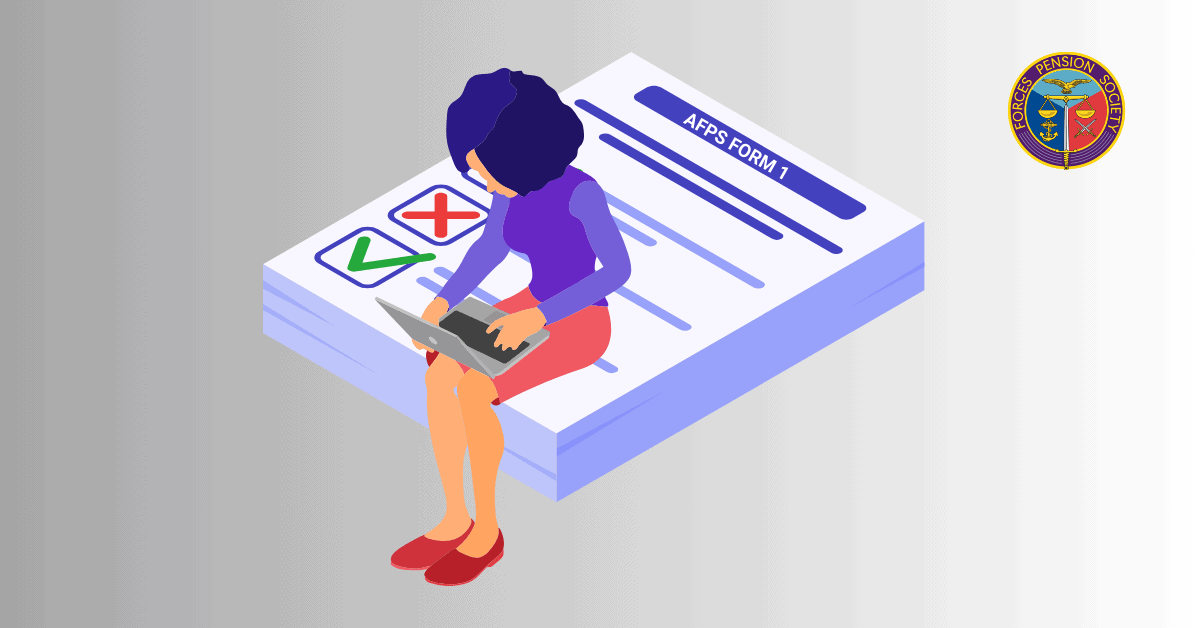
The following article was published in the February 2022 edition of Pathfinder magazine. Some minor changes have been made to the content since publication, but the article is materially unaltered.
In last month’s Pathfinder we explained the ‘McCloud remedy’, part of which was the transfer of all serving personnel to AFPS 15 on 1 April 2022. In this article, we set out the main provision of AFPS 15 as an introduction to those who will become AFPS 15 members for the first time and a reintroduction to those who are currently members.
First a little recap. On 1 April 2015 a new Armed Forces pension scheme was introduced – AFPS15. Those of you who first joined the Armed Forces on or after that date will have joined as a member of AFPS 15. Many of you will have been transferred to AFPS 15 on 1 April 2015 and, as explained in last month’s Pathfinder, those who were in service both on or before 31 March 2012 and on or after 1 April 2015 with any break in service of less than 5 years will be offered the choice of whether they wish to receive legacy benefits or equivalent AFPS 15 benefits for the remedy period (1 April 2015 – 31 March 2022).
Some of you remained on AFPS 75 or AFPS 05 as you were within 10 years of the scheme’s normal retirement age – you too will be invited to consider which scheme you want your 1 April 2015 – 31 March 2022 benefits to count in. All serving personnel who continue in service after 1 April 2022 will do so as members of AFPS15 so now is a good time to recap on AFPS 15 benefits. Benefits in your legacy (‘old’) scheme will be protected and paid in accordance with the rules of that scheme.
Like its predecessors, AFPS 15 has a two year ‘vesting period’. This means that, in order to qualify for member and dependants’ benefits, members need to give two calendar years service. Time within the last five years as a legacy scheme member will count towards this vesting period so those of you becoming AFPS 15 members on transfer from one of the legacy schemes will ‘vest’ automatically by virtue of your current service.
The pension builds up at a rate of 1/47th of pensionable earnings for each year of service. Whilst in service, the pension already accrued is revalued each year by the Average Earnings factor. The Average Earnings figure is based on Average Weekly Earnings (AWE) figures. AWE is calculated using information drawn from the Monthly Wages and Salaries Survey, which samples around 9,000 employers in Great Britain. It provides estimates of monthly and annual change for the main industrial sectors, and is used to increase (revalue) previous years of AFPS15 accruals. This sounds complicated so let us give an example:
Sergeant X has been an AFPS 15 member since 1 April 2015. Their pensionable pay in 2015/16 is £37,300 rising by increments to £46,500 in 2020/21.
In 2015/16 pension earned = £793.62 i.e. 1/47th of £37,300.
On 1 April 2017 this £793.62 increased by Average Earnings (2.6%) so becomes £814.25 and 1/47th of 2016/17’s pensionable pay (i.e. 1/47th of £39,380) is added (£837.87) giving a new pension accrual total of £1,652.12.
On 1 April 2018 this £1,652.12 increased by Average Earnings (3%) so becomes £1,701.68 and 1/47th of 2017/18’s pensionable pay (i.e. 1/47th of £41,000) is added (£872.34) giving a new pension accrual total of £2,574.02.
On 1 April 2019 this £2,574.02 increased by Average Earnings (2.8%) so becomes £2,646.09 and 1/47th of 2018/19’s pensionable pay (i.e. 1/47th of £43,095) is added (£916.92) giving a new pension accrual total of £3,563.01.
On 1 April 2020 this £3,563.01 increased by Average Earnings (4%) so becomes £3,705.53 and 1/47th of 2019/20’s pensionable pay (i.e. 1/47th of £44,828) is added (£953.79) giving a new pension accrual total of £4,659.32.
On 1 April 2021 this £4,659.32 increased by Average Earnings (2.4%) so becomes £4,771.14 and 1/47th of 2020/21’s pensionable pay (i.e. 1/47th of £46,500) is added (£989.36) giving a new pension accrual total of £5,760.50.
AFPS 15 pensions are payable at age 60 if the individual serves to that age. If they leave before age 60 the pension is deferred until their state pension age. Once deferred, pensions increase by the Consumer Price Index each April. A deferred pension may be claimed as early as age 55 but the actuary will reduce it to take account of the fact that it will be in payment for longer.
The only time that the pension may be paid before age 60 is in the event of medical retirement. Those leaving ‘normally’ with at least 20 years reckonable service and at least age 40 (the 20/40 point) will be entitled to a lump sum and an annual income from the Early Departure Payment (EDP) Scheme. The lump sum is 2.25 times the AFPS 15 pension earned and the annual income is at least 34% of the AFPS 15 pension earned.
There is no automatic lump sum in AFPS 15 but pension can be surrendered to create one. Under HMRC rules, the largest lump sum which can be created is worth 25% of the pension pot. Put simply, to work out the maximum that can be generated, the annual pension is multiplied by 20/56th, and then by 12. The rule of thumb is that, for every £1 of pension which is surrendered, a lump sum of £12 is created.
Those who are medically discharged will qualify for benefits based on the severity of their condition. There are three ‘Tiers’ of award. Medical conditions placed in Tier 1 receive a deferred pension plus an immediate compensatory lump sum from a separate scheme. This lump sum is worked out by multiplying 1/8th of the member’s Final Pensionable Pay (FPP) by their length of service, with a minimum payment of 6 month’s FPP and a maximum of 2 year’s FPP. For those awarded a Tier 1 who have reached the 20/40 point, EDP is payable at the normal rate.
Conditions placed in Tiers 2 and 3 receive an enhanced pension payable immediately. The enhanced taxable ill-health pension is calculated by multiplying the average pension by the number of years reckonable service (i.e. the number of years of Service in AFPS 15), plus an enhancement. The average pension is calculated by dividing the pension in the ’15 scheme ‘pension pot’ by the reckonable service. The enhancement is calculated as 1/3rd of the years remaining until age 60 for a Tier 2 condition, or half of the number of years to age 60 in the case of a Tier 3 condition. When ill-health benefits are payable from AFPS 75 or AFPS 05 as well, the sums payable from AFPS 15 are adjusted to take account of them – in next month’s Pathfinder we will start to explore the effect of having benefits payable from more than one scheme.
If an individual dies in service, their nominated beneficiary will receive a lump sum of four times their FPP – so over £186K in the case of Sergeant X used in the example above. More than one beneficiary may be nominated and the lump sum divided as the member directs. If nobody is nominated, and there is no adult dependant, the lump sum goes to the estate. Their pension (which will be the sum from which dependants’ benefits would flow) would be calculated as if they were being medically discharged with a Tier 3 condition (so, maximum enhancement).
In the event of the member’s death, their spouse, civil partner or eligible partner will receive a pension of 62.5% of their pension entitlement for life. An eligible partner is someone who is living with the member and is financially dependent upon or interdependent with them. If you have an eligible partner, it is a good idea to nominate them to receive any pension lump sum entitlement as it will help Defence Business Services to establish a financial tie with you. If you do nominate, please remember to keep your nomination under review as failure to do so could result in the wrong person (e.g. an ex-partner) getting what could be a sizeable sum of money!
Eligible children of a member who has died will be entitled to pensions until they are age 18 or, if they are still in full time education or vocational training, up to age 23. If a child is unable to undertake gainful employment due to a mental or physical disability suffered before age 23 a pension is payable for life. 37.5% of the member’s pension entitlement is available for distribution between the children. If an adult’s pension is in payment, this 37.5% of the member’s pension is divided between the children with no child getting more than a quarter of the member’s pension. If no adult’s pension is in payment and the children are not living with a parent or step parent, 100% of the pension is divided between the children with no child getting more than one third.
Next month we will start to explore how benefits are calculated for people who have been transferred to AFPS 15 from either AFPS 75 or AFPS 05. This will help not only new transferees but also those of you, in due course, who are eligible and will have a choice to make about your scheme membership between 1 April 2015 and 31 March 2022.
You can read more about Average Weekly Earnings here and you can read the February issue of Pathfinder here




